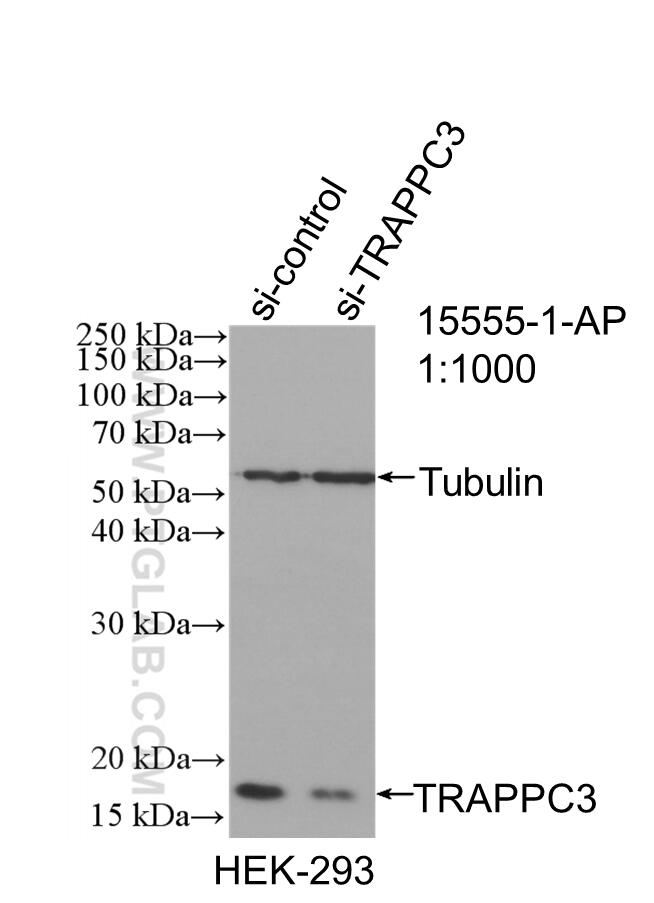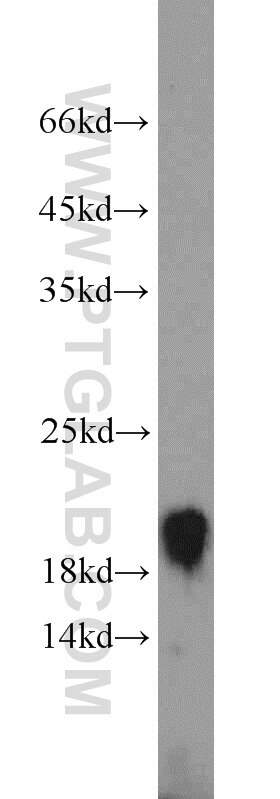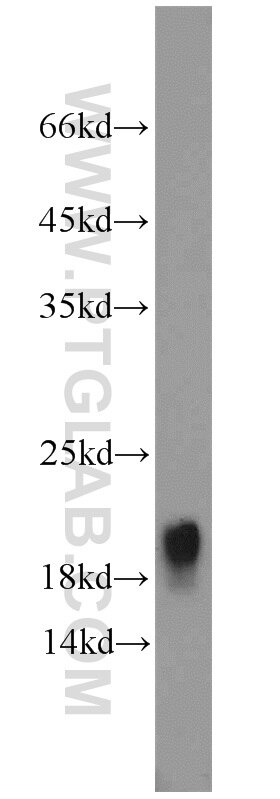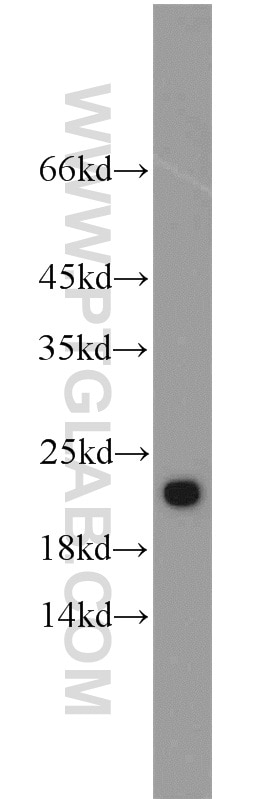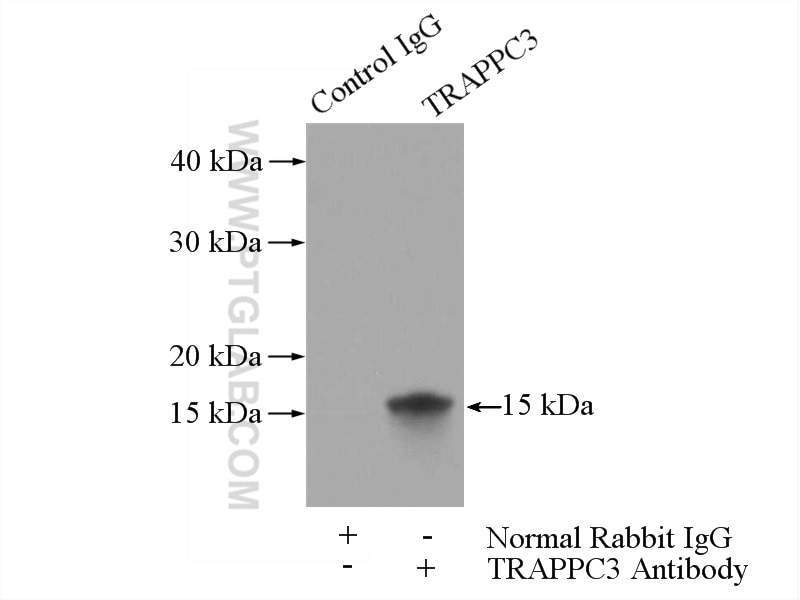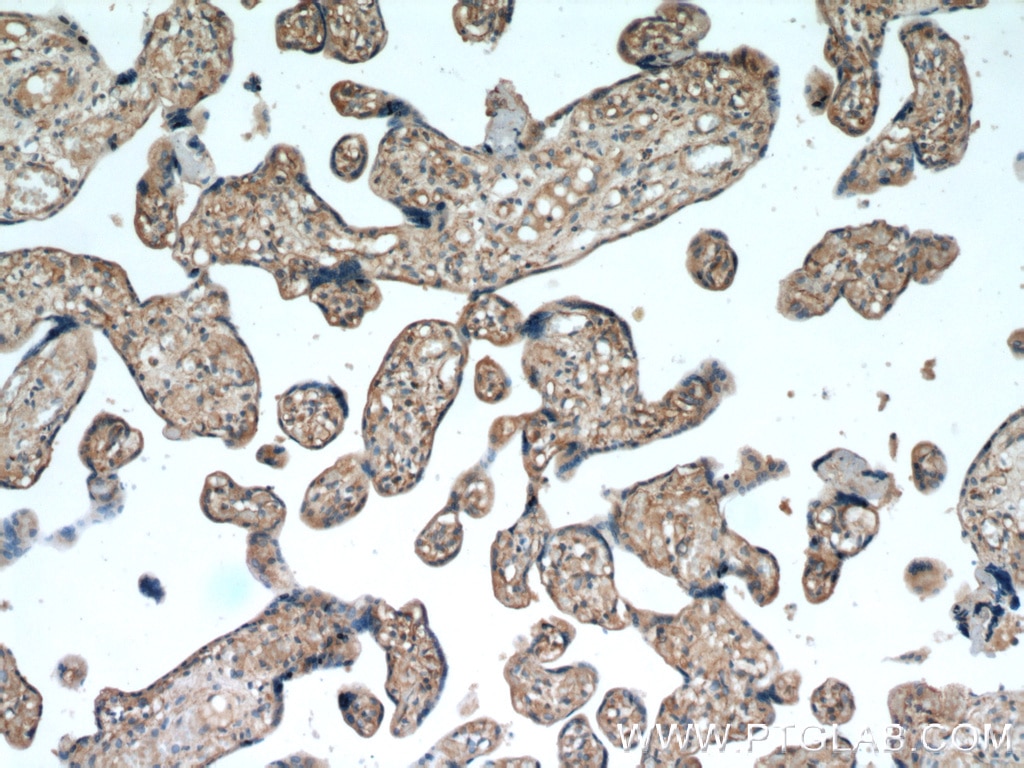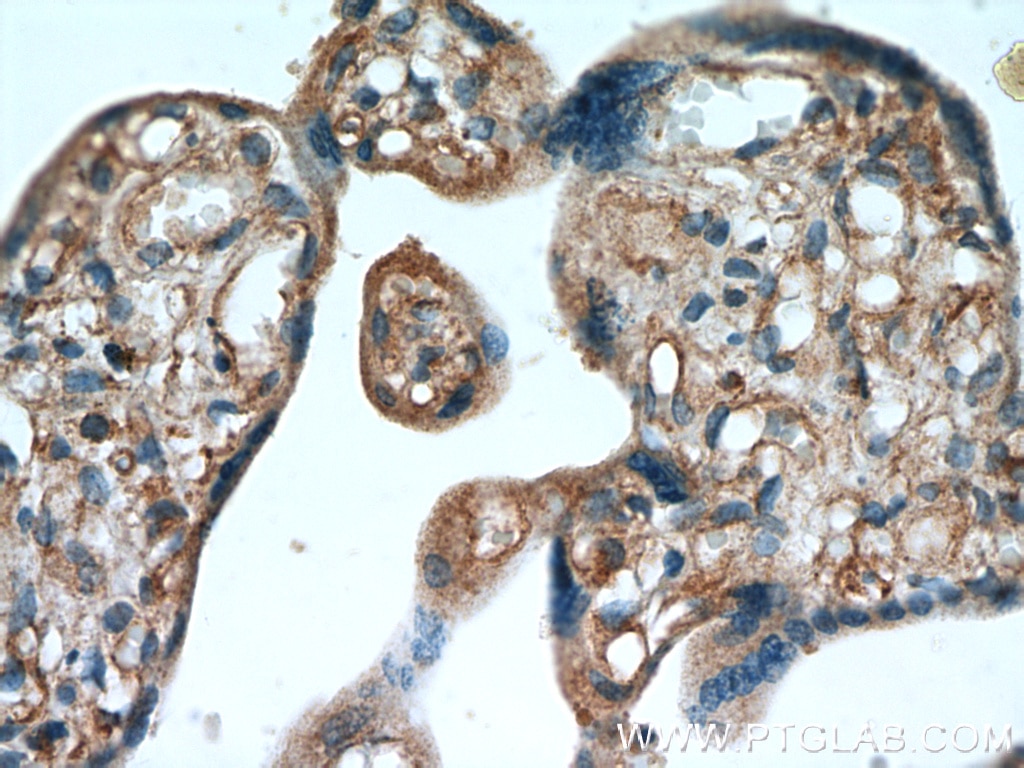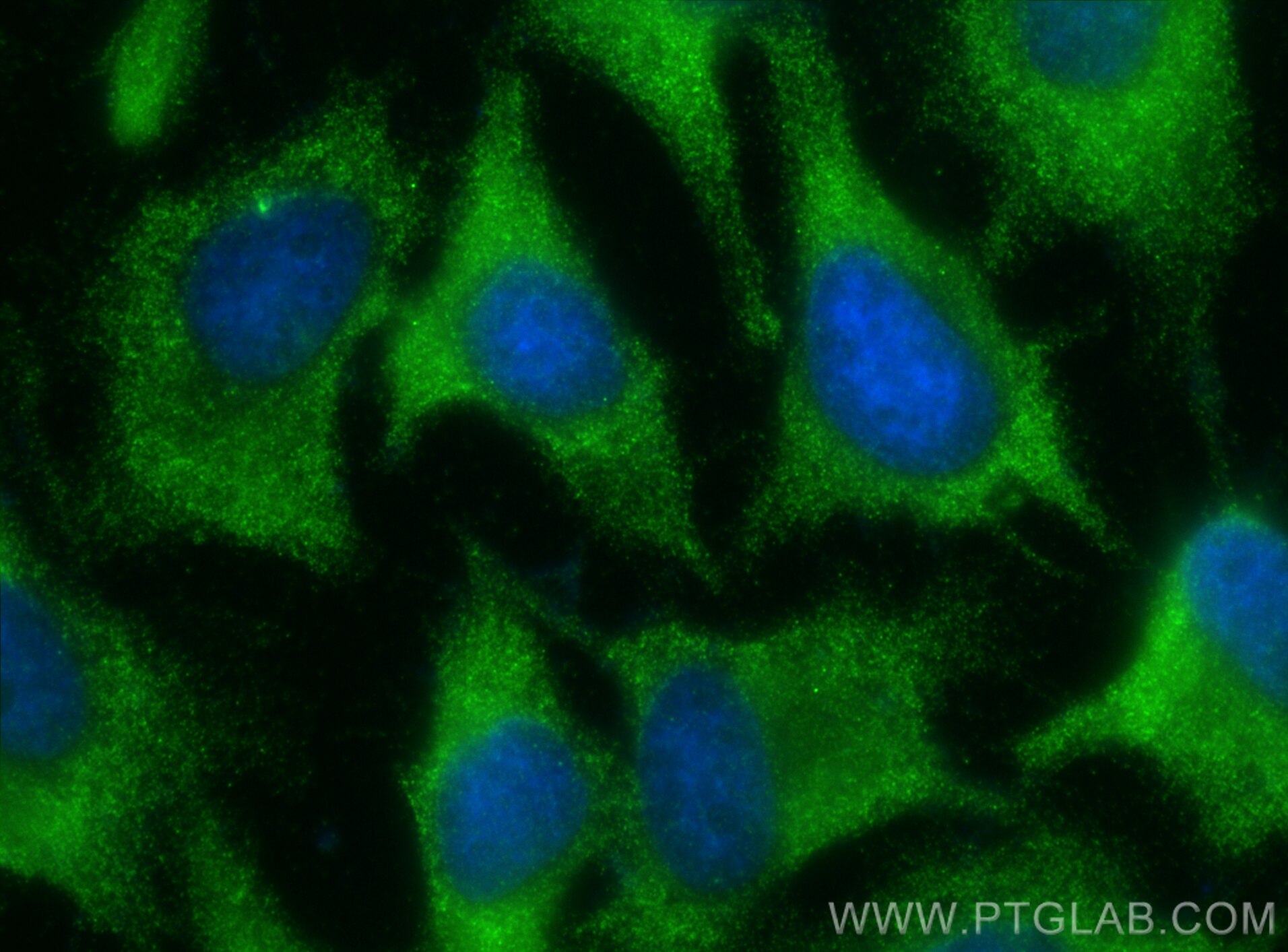- Phare
- Validé par KD/KO
Anticorps Polyclonal de lapin anti-TRAPPC3
TRAPPC3 Polyclonal Antibody for WB, IHC, IF/ICC, IP, ELISA
Hôte / Isotype
Lapin / IgG
Réactivité testée
Humain, souris
Applications
WB, IHC, IF/ICC, IP, ELISA
Conjugaison
Non conjugué
N° de cat : 15555-1-AP
Synonymes
Galerie de données de validation
Applications testées
| Résultats positifs en WB | tissu hépatique de souris, cellules HEK-293, cellules PC-3, tissu d'intestin grêle de souris |
| Résultats positifs en IP | tissu hépatique de souris |
| Résultats positifs en IHC | tissu placentaire humain, il est suggéré de démasquer l'antigène avec un tampon de TE buffer pH 9.0; (*) À défaut, 'le démasquage de l'antigène peut être 'effectué avec un tampon citrate pH 6,0. |
| Résultats positifs en IF/ICC | cellules HeLa, |
Dilution recommandée
| Application | Dilution |
|---|---|
| Western Blot (WB) | WB : 1:500-1:1000 |
| Immunoprécipitation (IP) | IP : 0.5-4.0 ug for 1.0-3.0 mg of total protein lysate |
| Immunohistochimie (IHC) | IHC : 1:20-1:200 |
| Immunofluorescence (IF)/ICC | IF/ICC : 1:200-1:800 |
| It is recommended that this reagent should be titrated in each testing system to obtain optimal results. | |
| Sample-dependent, check data in validation data gallery | |
Applications publiées
| WB | See 7 publications below |
Informations sur le produit
15555-1-AP cible TRAPPC3 dans les applications de WB, IHC, IF/ICC, IP, ELISA et montre une réactivité avec des échantillons Humain, souris
| Réactivité | Humain, souris |
| Réactivité citée | Humain, souris |
| Hôte / Isotype | Lapin / IgG |
| Clonalité | Polyclonal |
| Type | Anticorps |
| Immunogène | TRAPPC3 Protéine recombinante Ag7924 |
| Nom complet | trafficking protein particle complex 3 |
| Masse moléculaire calculée | 20 kDa |
| Poids moléculaire observé | 20-22 kDa |
| Numéro d’acquisition GenBank | BC007662 |
| Symbole du gène | TRAPPC3 |
| Identification du gène (NCBI) | 27095 |
| Conjugaison | Non conjugué |
| Forme | Liquide |
| Méthode de purification | Purification par affinité contre l'antigène |
| Tampon de stockage | PBS with 0.02% sodium azide and 50% glycerol |
| Conditions de stockage | Stocker à -20°C. Stable pendant un an après l'expédition. L'aliquotage n'est pas nécessaire pour le stockage à -20oC Les 20ul contiennent 0,1% de BSA. |
Informations générales
TRAPPC3 (trafficking protein particle complex 3, also known as Bet3) is a component of TRAPP, a complex involved in the tethering of transport vesicles to the cis-Golgi membrane. There are three TRAPP complexes identified in yeast with distinct roles: TRAPPI in ER-Golgi traffic, TRAPPII in intra-Golgi and endosome-Golgi traffic, and TRAPPIII in autophagy. Recently it has been proposed that at least two complexes exist in mammals. TRAPPC3 is the most conserved subunit of TRAPP and has been used to precipitate the intact tethering complex both from yeast and from human cells. It has also been reported that TRAPPC3 is required for Rabin8 centrosome trafficking and ciliogenesis. Expressed ubiquitously, TRAPPC3 protein is present in both membrane-bound and cytosolic forms. This antibody recognizes the endogenous 20-22 kDa TRAPPC3 in multiple cell lines. (15728249, 21273506, 23394947)
Protocole
| Product Specific Protocols | |
|---|---|
| WB protocol for TRAPPC3 antibody 15555-1-AP | Download protocol |
| IHC protocol for TRAPPC3 antibody 15555-1-AP | Download protocol |
| IF protocol for TRAPPC3 antibody 15555-1-AP | Download protocol |
| IP protocol for TRAPPC3 antibody 15555-1-AP | Download protocol |
| Standard Protocols | |
|---|---|
| Click here to view our Standard Protocols |
Publications
| Species | Application | Title |
|---|---|---|
Cell A systematic mammalian genetic interaction map reveals pathways underlying ricin susceptibility. | ||
Proc Natl Acad Sci U S A Primary cilia membrane assembly is initiated by Rab11 and transport protein particle II (TRAPPII) complex-dependent trafficking of Rabin8 to the centrosome. | ||
Int J Biol Sci Defective neurite elongation and branching in Nibp/Trappc9 deficient zebrafish and mice | ||
J Biol Chem The C7orf43/TRAPPC14 component links the TRAPPII complex to RABIN8 for preciliary vesicle tethering at the mother centriole during ciliogenesis. | ||
Signal Transduct Target Ther RING finger 138 deregulation distorts NF-кB signaling and facilities colitis switch to aggressive malignancy. | ||
Metabolites Integrating TCGA and Single-Cell Sequencing Data for Hepatocellular Carcinoma: A Novel Glycosylation (GLY)/Tumor Microenvironment (TME) Classifier to Predict Prognosis and Immunotherapy Response |
